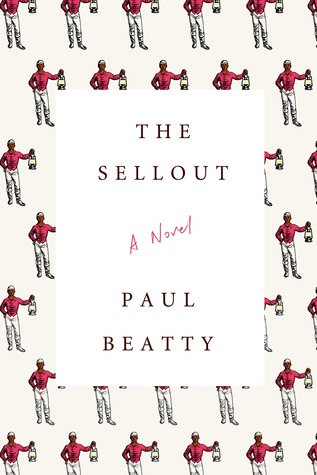The Sellout by Paul Beatty 304 pages
The black narrator, Bonbon, grew up in a “disappeared” L.A. suburb, once an “agrarian ghetto” called Dickens, where he was subjected to his father’s sociological, and abusive, experiments about race. Despite his father’s attempts to indoctrinate him into ‘black’ thinking, Bonbon is ultimately also called the Sellout because his character, although himself an African-American, does not espouse African-American stereotypes, he just doesn’t get the ‘black’ thing. As a grown man, Bonbon discovers one day that his town has ceased to exist, and he sets about to rectify the situation. He elicits help from his friend, Hominy, the last surviving member of TV's Little Rascals (he was Buckwheat’s understudy). Help is really not the appropriate term as Hominy insists on being enslaved and Bonbon suffers through his role as massa. Part of the solution to making Dickens visible is to reintroduce segregation, first on buses, then in the schools. As one can imagine, imposing voluntary slavery and apartheid onto an American community eventually causes a legal nightmare, and the case ends up in the Supreme Court.
This novel is a daring satire about race relations in contemporary America. Nothing is sacred - politics, pop culture, the media's portrayal of African-Americans - so many aspects of U.S. life are targeted and turned upside-down by Beatty's razor-sharp musings. This book is often very funny, and full of ideas and snipes at deserving targets, but not an easy book to read if you are easily offended. The plot is clearly ridiculous, but it does allow a very full discussion of race - the stereotypes, the archetypes, and array of attitudes from subtle to extreme.
Posted By: Regina C.

No comments:
Post a Comment